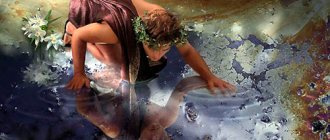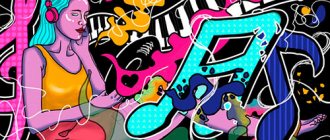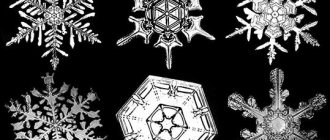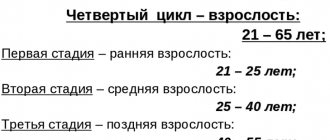A detailed description of the subtleties of a person’s character and temperamental characteristics allows us to predict his line of behavior, actions taken and reactions to various situations. If you want to enter into a close relationship, hire an employee for a vacancy, or are simply interested in the fate of a certain person, you will probably want to get a ready-made psychological portrait of the individual, which I will talk about in this article, and also show a sample of how to write it.
What is it like?
This is a decoding of personality in writing, in words. It makes it possible to recognize the individual facets of a person, identify his abilities, and determine possible actions.
This technique is widely in demand and is used in all areas of activity - personal, professional, scientific. Recruiting agencies analyze the abilities of job applicants, teachers draw up psychological descriptions of students to successfully build a curriculum, managers identify the weaknesses and strengths of employees.
Melancholic
Motto: do no harm!
The psychological portrait marked “melancholic” is as follows: the strengths of the personality are gentleness, the ability to sympathize, humanity, high sensitivity and goodwill. The disadvantages of this type of temperament are suspiciousness, shyness, low performance, isolation, daydreaming and vulnerability. Never shout at a melancholic person, do not put pressure on him, do not give harsh and harsh instructions, as this person is extremely sensitive to intonation and is too vulnerable.
It is very difficult to find an individual who would fully meet a certain temperament; usually one of them is dominant.
What is it for?
Everyone can try to make their own psycho-portrait or study the behavior of a loved one. However, to obtain accurate and most reliable data, it is better to seek help from a specialist. To fully determine your personality characteristics, sign up for my personal consultation. Having such data, you can find the most suitable occupation, hobby, find out the degree of your openness and sociability, identify goals, and increase self-esteem.
Emotionality
Since the time of the ancient Greek thinker Plato, the entire mental life of an individual has been divided into three relatively independent units: mind, will and emotions.
If the will and mind are subordinated to a person at least to some extent, then emotions always arise regardless of our desire. This is a reflection of personal significance and assessment of situations for the process of human life in the form of feelings and experiences. This is where the subjectivity and involuntariness of emotions are manifested. The ability to manage emotions is necessary primarily for health and ambition.
What does it mean to be able to manage emotions? Most often, this statement means hiding them. It hurts, but we won’t show it, we’re ashamed, but we pretend to be indifferent, it’s offensive, but outwardly we’ll only show irritation and anger. But because a person does not show his emotions, they do not become weaker, rather, on the contrary, or take the form of defense - aggression.
Key points
The portrait includes a detailed examination of several aspects.
Temperament
Scientifically, 4 groups of people have been identified: phlegmatic, sanguine, choleric and melancholic. Temperaments are practically never found in their perfect form. Typically, a personality combines two different types. Depending on our internal state and emotionality, we manifest ourselves differently in life processes, react to the same situations, participate in conversations and start relationships. It is worth considering that the type of temperament is an innate parameter that does not change during existence. Do not expect that an indifferent phlegmatic person will suddenly become an organizational and explosive choleric person, and even if changes appear to you, most likely this is a temporary impulse and an erroneous judgment. Only a slight adjustment to the original data has been proven.
- Choleric people are the most active, hardy, bright and strive towards their goal.
- Melancholic people, on the contrary, are vulnerable, calm, and indecisive.
- Phlegmatic people communicate easily, they are reliable friends and co-workers who adequately assess any situation.
- Sanguine people are sociable, sincere, sympathetic and friendly.
Character
This is a set of stable behavioral traits that can transform and change over time depending on the environment, upbringing and life shocks. Although it is believed that the initial list of parameters is laid down at the genetic level, it is significantly supplemented by moral principles acquired over time.
Thus, children of the same parents, when brought up in families with different foundations, can turn out to be completely opposite personalities. The character of any person can be simultaneously described from two sides. For example, you can be kind, sincere and open, but at the same time jealous, touchy or lazy.
Capabilities
Literary sources divide them into three groups: spiritual, physical and social. Naturally, the physiological ones are instilled first - health, skills, strength, endurance. Spiritual ones depend more on upbringing and habitat. This is education, cultural inclinations, morals. Social ones are also acquired and formed in the process of life - these are openness, sociability, the ability to establish contacts, responsibility, high punctuality and strong discipline.
Focus
The foundation of this parameter is motivation. It represents a person’s daily activities and explains his actions. Some people want to satisfy their physiological needs, they want to eat delicious food, live in a cozy apartment or drive a modern car. For others, it doesn’t matter, and their priorities include communication, new information, making acquaintances, realizing their creative potential, and playing sports.
Emotionality
This parameter is expressed in the ability and way to express one’s feelings and experiences to others, to show one’s mood or, conversely, to hide it. Depending on the degree of emotionality present in you, you form a different reaction to the surrounding reality. This is what makes it possible to understand your neighbor, regardless of his language, culture, religion or level of intelligence. Everyone will be able to recognize anger, happiness, and fear in their interlocutor.
Psychologist Daria Milai
Make an appointment
Intelligence
A person is able to develop himself through the perception of new information, practical exercises, and the accumulation of experience, but the basic level of intellectual development with which a child is born plays a key role. It helps to adapt to new conditions, evaluate an unfamiliar situation and the behavior of third parties, make assessments and conclusions. This is the ability to think rationally and act correctly regarding the current situation. As a rule, talent or aptitude for any field of knowledge is discovered already in childhood; the main thing is not to miss this moment and begin to develop it.
Communication skills
Any individual, regardless of the number of years lived, financial and social status, level of intellectual development, should be able to form communication with others. However, the ability to speak is not equally developed among individuals. For example, a psychoportrait of a comedian or manager should reveal a high level of communication skills, in contrast to a gardener, combine operator or fisherman. It is worth considering that any professional activity is inseparably linked with communication, and in the absence of this parameter, achieving success and getting a promotion will be almost impossible.
Self-esteem
This is the level of self-confidence. Conventionally, it is divided into overestimated, underestimated and objective. With the first, there is an overestimation of one’s capabilities, a deliberate overestimation of achievements, or even attribution of other people’s heights to oneself. In the second, on the contrary, there is excessive self-criticism and lack of confidence in one’s abilities, while normal speaks about an adequate assessment of oneself and one’s actions. If you have identified low self-esteem, it is better to seek help from a qualified specialist.
Face-to-face consultation
What are the features and advantages of face-to-face consultation?
Find out more
Skype consultation
What are the features and benefits of Skype consultations?
Find out more
Strong-willed qualities
Will is a kind of internal core of personality, strength of character and the main parameter that allows you to achieve success. Strong-willed qualities are purposefulness, firm determination and complete independence, lack of fear of taking risks, and the ability to take responsibility. Even with positive living conditions, high intelligence, and talent, without will an individual will not achieve effective results. A strong-willed person does not have the harmful laziness, lack of initiative, lack of discipline, or weak character.
Self-control
Controlling yourself, your emotions, words and actions, being well-mannered - these are the qualities that will help you establish good communication with others, establish business or love relationships. Those who cannot sufficiently control themselves and keep their mouth shut will not have worthy interlocutors. Many companies pay attention to this skill when hiring employees. Recruiters deliberately create various stressful situations and ask uncomfortable questions to understand how you will behave.
Teamwork ability
Not all individuals have the ability to work in a team. However, it is a valuable skill that allows you to adapt and listen to other people. It needs to be developed from childhood.
Motivation
One of the most powerful qualities of a person. Even a lazy and indecisive individual, if necessary and willing to make a purchase, get a position or win the favor of an interlocutor, can take unexpected and rash actions, accelerating the process of achieving a goal. For different people, motivation can be hidden, superficial or strong, reaching the point of mania and passion.
Social attitudes
One of the consequences of communication is the transfer of information - the exchange of news, experience, information. Data received from outside influences the behavior, mood and actions of people, pushing them to certain actions.
Intelligence
Intelligence is a system of mental processes that ensures the implementation of an individual’s ability to assess the current situation, make decisions and regulate their behavior in accordance with this. As a rule, intelligence is important if the situation is non-standard - as a symbol of the individual’s learning everything new.
Jean Piaget, a psychologist from France, called interaction with the outside world through adaptation to it one of the most important functions of the intellect. Or, in other words, the ability to navigate conditions and rationally structure one’s behavior.
The core of intelligence is a person’s ability to identify basic properties in a situation and structure his behavior in accordance with them. The Soviet psychologist S. L. Rubinstein in his works considered this category as a type of personal behavior - “smart behavior”.
How to draw up the correct psychological portrait of any person: sample
To draw up a psycho-portrait of yourself or someone else, you need to seek help from a specialist in the field of psychology or try to do it yourself. Various questionnaires, effective methods and techniques for assessing a person’s personality and scrupulously analyzing their abilities will help you. These include a portrait based on a drawing, studying handwriting, posing logical riddles, testing, communicating without words, but the easiest and fastest option is studying the properties described above. You just need to take a notepad and write down each item.
Plan
A typical sample will tell you how to make a reliable psychological portrait of a person. You should follow simple instructions:
- Consider personal data - gender, age, external parameters.
- Social status – position, specialty, marital status.
- A short biography, which indicates the main, most important events and moments of life, shocks, emotions.
- Analysis of the 13 personality traits described above.
- Conclusions, in which each item is examined in detail, existing problems are identified, ways to solve them, and abilities and skills are revealed.
You must understand that the technique must correspond to the age, experience and level of education of the person being studied. It is necessary to create comfortable conditions for the experiment. The overall picture must be drawn up in such a way that it is understandable to a person without specialized education and does not burden it with unknown terms.
Sanguine
Motto: trust, but verify!
The advantages of this type of temperament are cheerfulness, sociability, enthusiasm and responsiveness, and the disadvantages are scatteredness, over-sociability, frivolity, a tendency to arrogance, superficiality and unreliability. The psychological portrait of a person marked “sanguine” is as follows: the individual is always happy to promise something so as not to offend the applicant, but he does not always keep his word, so you should check whether he fulfilled his promise.
Example and writing sample: how to create a psychological portrait of a personality
Historical publications, brochures, textbooks, and fiction are filled with a lot of information about the lives of famous people. Of course, their psychoportraits deserve special attention. Everyone wants to know the subtleties of nature and character inclinations of Hitler, Pushkin, Stalin, Joan of Arc and other outstanding people. Characteristics reveal the reasons for their behavior, lifestyle, and the formation of motivation. The analysis was carried out on the basis of personal diaries, written eyewitness accounts, and decrypted archives. Sometimes preserved photos and video fragments are used to detail the data. As an example of how to write a psychological portrait of a personality, I will describe the person of Napoleon Bonaparte:
- This is a short man. He suffered from epilepsy.
- According to the plan, personal information about the subject was compiled: the Emperor of France, an active statesman. Married twice.
- There is a love of literature and military affairs. Uncommunicative, suffered excessively from bullying by peers.
- An active and efficient person, purposeful, punctual, disciplined, but moderately selfish. An excellent strategist who perceives and processes new information with lightning speed and also quickly makes decisions. An antisocial person who is disgusted with others. He kept himself in control, even in the presence of internal turmoil and troubles.
- The main motivation is the thirst for power.
- High position in society, position and social status significantly aggravated the problems that arose in childhood and gave rise to anger and contempt for people.
This is a good example from the psychology of competently drawing up a psychological portrait of a non-standard personality. Having analyzed the commander’s youth and living conditions, his aggression, irritability and rejection of society in the future become clear.
Ask a question
Choleric
Motto: not a moment of peace!
The principle of communicating with a choleric person is based on the use of his advantages: enthusiasm, mobility, energy, passion and determination. At the same time, it neutralizes the disadvantages of this type of temperament: aggressiveness, intolerance, lack of self-control, and conflict. A psychological portrait with the characteristic “choleric” should suggest that a person should always be busy with some kind of activity. Otherwise, he will direct all his energy and activity to the team and can disintegrate it from the inside.
History of the portrait genre
In the Ancient world, portrait art was mainly sculptural, and in the Middle Ages it practically disappeared from the scene. The development of the portrait genre in European painting began in the era of the Proto-Renaissance, with the growth of secular and anthropocentric ideas, which ultimately became the basis of the Renaissance worldview.
At first, faces were written in profile - similar to how they were minted on coins. A great achievement of Renaissance artists was turning faces in profile and three-quarters.
The era of absolutism brought fashion for ceremonial portraits. They were ordered by kings, high clergy, and aristocrats. Preference was given to the classicist approach. A position appeared as a court painter, specializing primarily in this genre.
Baroque introduced light and shadow contrasts, power of emotions, depth and drama into portrait art.
Rococo painters added intimacy, lyricism, and graceful charm to portraits.
Romanticism seriously influenced the development of the genre: portrait artists of this movement sought to look into the human soul and create a spiritualized image in a portrait.
Since the end of the 18th century, realistic trends have been growing in portraiture.
But by the end of the 19th and beginning of the 20th centuries, realism was losing ground. Thus, the impressionists tried to reflect the mood of the model and emphasize emotions at a specific moment in time.
Many artists began to focus on expression. An expressive example is the flashy image of Gustave Courbet.
Others experimented with color, others distorted proportions, others created images from cubic shapes, others spiced them up with surrealism...
Modern portrait painters continue to search for original artistic approaches that allow them to reflect a person’s individuality.
Focus
Motivation for activity and behavior, satisfaction of needs - all this underlies the orientation of the individual (on a task, on oneself or on communication).
Some may only be satisfied with security and satisfaction of physiological needs. And for others, in addition to this, it is no less important to satisfy social needs, the need for self-expression, and also to realize their creative abilities. The main task of a manager and psychologist is to identify the needs, beliefs and interests of each individual and determine the direction of his motives.
The influence of appearance on people's behavior
Even in everyday life, we wake up, look at ourselves in the mirror, are satisfied with the reflection of our face and go out to meet society. In a crowd of people we look for people like ourselves, because next to them we feel calm. This turns on the focus of attention of similarities. A person, seeing his likeness, automatically becomes calm.
It is impossible to figure out why we like some people’s faces and not others, relying only on mathematical formulas or certain standards. Almost all scientific theories about appearance are based on evolutionary psychology. Human behavior has its origins in our animal past.
It is ingrained in the consciousness of each of us that beauty testifies to the high quality of the genes of its owner. This means that a beautiful personality will give strong and healthy offspring.
Today, many scientists believe that beauty is not a sign of the quality of its owner, but, on the contrary, is a sign of stereotype, maximum similarity with one’s own kind. And the easier it is for our brain to process the image of a person, the more beautiful he seems to us. It is based on the principle of saving energy, which works in all cases of life: when choosing a partner, a car, a dog.
Rules for collecting information about yourself
To create a psychological portrait, you must follow certain rules:
- Create comfortable conditions during testing.
- Set a specific goal for the research. The chosen technique must correspond to the intellectual development of the subject and his age.
- After testing, compare the available information to draw a conclusion.
- Tests must be accessible and understandable to people without education.
To create your psychological portrait, you need to know on the basis of which components the testing is carried out. After this, you need to make a list of questions on all points. Answer them to find out your image. Sample questions:
- How much control can I have over my behavior?
- Am I emotional or reserved?
- Can I control myself in emergency situations or not?
- How do I behave in society?
These are just a few of the questions you can ask yourself.
Let's draw a portrait. Preparatory stage for beginners
As we have already said, there are several preparatory stages: drawing the skull, then the ecorche (that is, the muscular frame of people’s faces), then building a plaster head, and the final stage is drawing from life. Why is a person not copied from a photograph in academic drawing? The fact is that it is difficult to feel the volume from a flat image. When dealing with a plaster model, you can always look at it from all sides, change the angle and direct the light, in the end. And in the photograph we have already clearly defined all the parameters, and they cannot be changed. Moreover, why create another hand-drawn “photo” from a real photo?
Before you put the first stroke on the paper, you need to prepare the drawing object
It doesn’t matter whether it’s a live model or a plaster head, the main thing is to choose the right angle and set the light
Already at the very first stage of creating a portrait in pencil, we will need knowledge in the fields of anatomy and geometry. First you need to carefully study the general shape; this can be done by generalizing the drawing and constructing the head schematically, omitting the details. This stage is called “chipping”. It helps us understand the structural features of the skull. A common mistake novice artists make is sketching the contours of facial elements.
But eyes, nose, lips are not just lines, they are three-dimensional figures of complex shape. Therefore, at the initial stage, learn to recognize the volume of each element and generalize the minor figures.
Therefore, first, a face is drawn with protruding brow ridges and a nose in the form of rectangular geometric shapes. Another important point is the contours of the skull. The curves and contours of the face depend on the features of the shape of the skull. Based on the skull we will build the shape of the future head.
The skull has two main sections: the brain and the facial. You need to understand and remember the design of the skull, the features of the shape of the bones, only when this material is firmly mastered can you begin to create a portrait in pencil.










